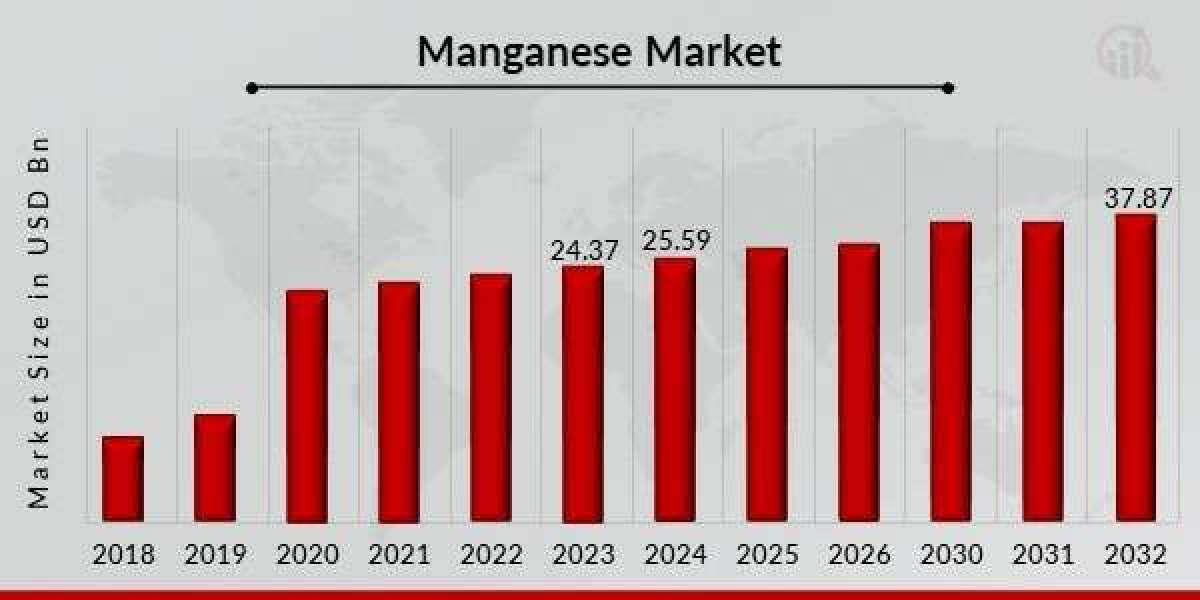The manganese market plays a critical role in the global industrial ecosystem, functioning as one of the key components for various manufacturing processes, particularly in the steel and battery industries. Manganese, a silvery-gray metal closely associated with iron, has carved its niche in multiple sectors owing to its chemical properties that make it valuable in strengthening materials and supporting electrochemical functions.
The significance of manganese primarily stems from its use as an essential alloying element in steel production. Approximately 90% of global manganese demand originates from the steel industry. Manganese improves the hardness, toughness, and stiffness of steel. It also acts as a desulfurizing and deoxidizing agent, which enhances the strength and workability of steel. As infrastructure development, construction, automotive manufacturing, and transportation sectors continue to grow worldwide, especially in emerging economies, the demand for manganese as a steel-strengthening component remains consistently high.
Apart from steel manufacturing, the manganese market is witnessing increased interest due to its expanding role in battery production, especially in lithium-ion and dry cell batteries. With the rise of electric vehicles (EVs), renewable energy storage systems, and portable electronic devices, the need for more efficient and long-lasting batteries is pushing the demand for battery-grade manganese compounds such as electrolytic manganese dioxide (EMD) and high-purity manganese sulfate monohydrate (HPMSM). These variants serve as essential components in the cathodes of lithium-ion batteries, offering stability and energy density that align with the needs of modern technology.
Furthermore, manganese is also used in the production of aluminum alloys and certain chemicals that serve as catalysts in the chemical industry. Its unique oxidizing properties make it suitable for applications in fertilizers, animal feed, and even water treatment. These diverse applications continue to drive steady demand across multiple industries.
From a geographical perspective, the manganese market is significantly influenced by mining and export activities from countries such as South Africa, Australia, Gabon, and Brazil, which are among the top producers of manganese ore. These nations hold substantial manganese reserves and possess well-established mining infrastructure. However, China remains a dominant force in manganese refining and processing, leading the global production of refined manganese products. This geographical split between ore producers and processors has created a complex supply chain that is both global and interdependent.
One of the market’s distinguishing characteristics is its volatility, shaped by fluctuating raw material costs, political stability in mining regions, regulatory constraints, and transportation logistics. For example, geopolitical events, labor strikes, or port disruptions in major mining countries can directly impact global manganese supply, leading to price shifts and supply shortages. Similarly, regulatory changes around environmental impact and export restrictions also influence the market dynamics, pushing companies to innovate in terms of sustainable mining and recycling processes.
The transition towards green technologies and sustainable development is another pivotal factor shaping the manganese market’s future. With the global push to reduce carbon emissions, electric mobility and clean energy systems are rapidly expanding, further accelerating the demand for manganese used in battery storage technologies. In response, many companies are increasing their investments in battery-grade manganese production facilities and developing new extraction technologies to ensure long-term supply security and environmental compliance.
Technological advancements are also playing a crucial role in transforming the manganese market. Innovations in manganese ore beneficiation, efficient smelting techniques, and recycling of manganese from scrap and battery waste are enhancing the overall efficiency of the value chain. Companies are also exploring deep-sea mining and extraction from lower-grade ores as conventional reserves face depletion or economic challenges.



